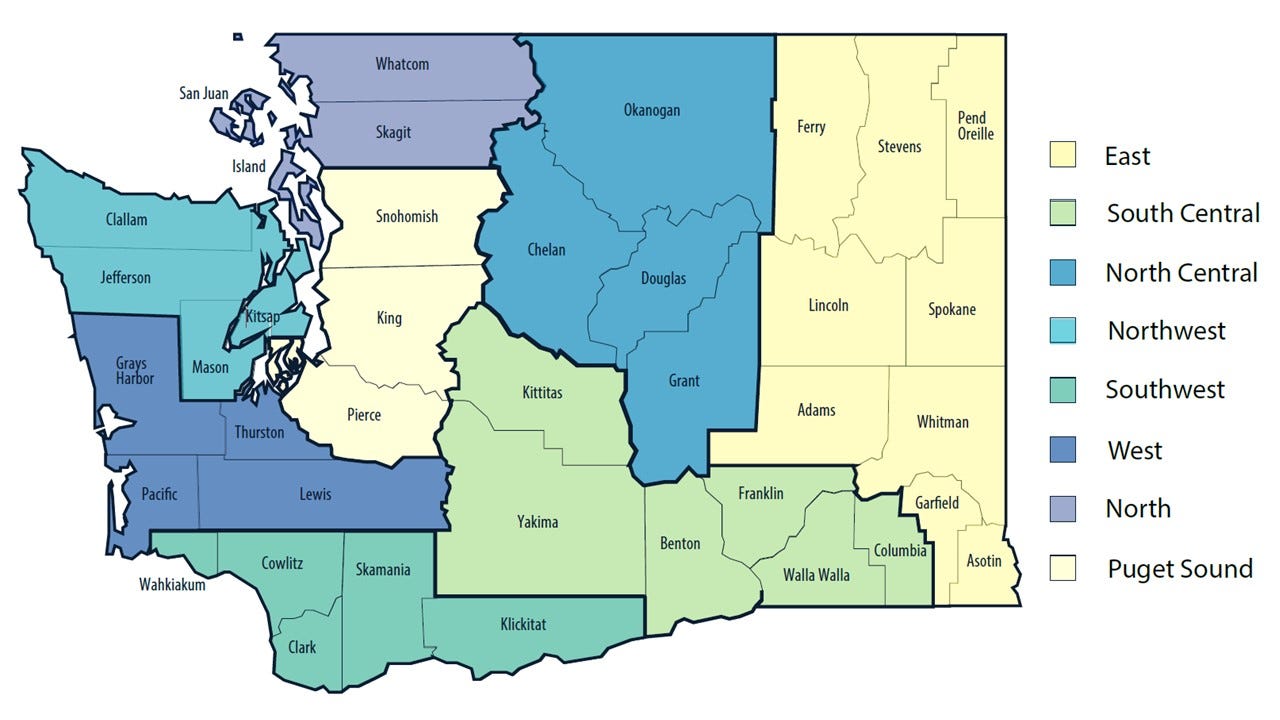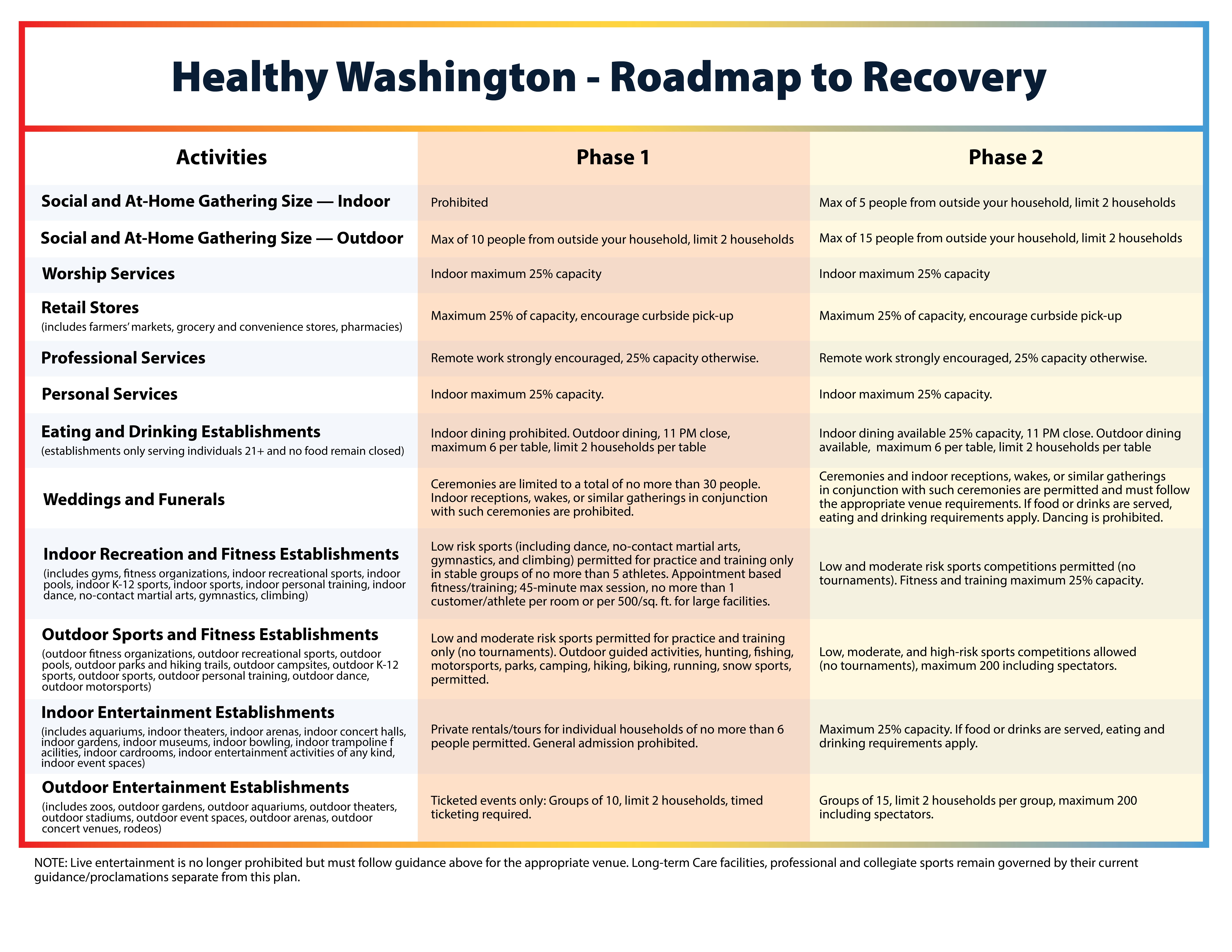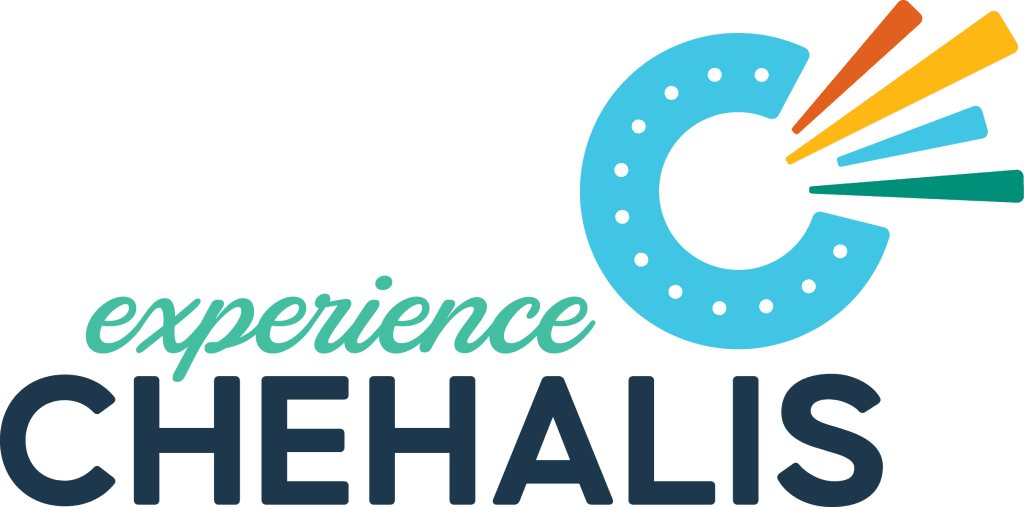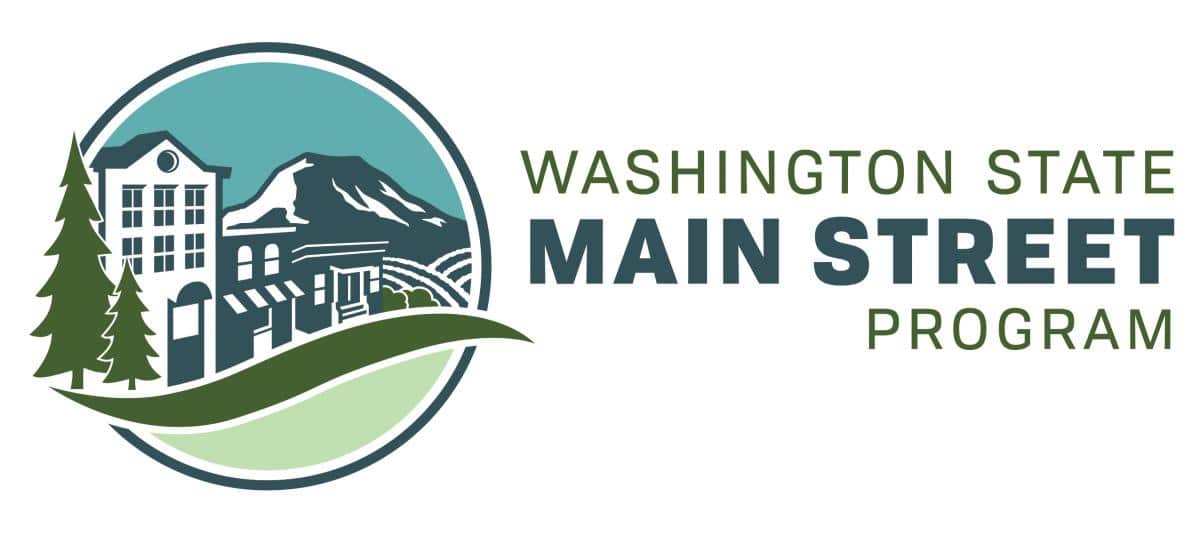Gov. Jay Inslee today announced “Healthy Washington — Roadmap to Recovery,” a COVID-19 phased recovery plan. Beginning on January 11, the state will follow a regional recovery approach with every region beginning in Phase 1.
“No one was untouched by the effects of the pandemic in 2020; many have and continue to suffer through no fault of their own,” Inslee said during a press conference Tuesday. “We aren’t out of this yet, but we are close to turning the corner on COVID-19 and this third wave of infection.”
Washington has avoided overwhelming the state’s health care systems throughout this pandemic so far through rigorous safety measures, such as physical distancing and masking, as well as social and economic restrictions. This new recovery system aims to safely ease some restrictions while also maintaining crucial hospital capacity, ensuring care for Washingtonians that need it and paving the way for economic recovery.
Regions

The regions are mostly based on Emergency Medical Services (EMS) regions used for evaluating healthcare services. There will be eight regions of four or more counties, divided according to available health care services based on metrics such as hospitalizations, case data and disease mobility.
The eight regions are as follows:
- Puget Sound: King, Pierce, Snohomish
- East: Adams, Asotin, Ferry, Garfield, Lincoln, Pend Oreille, Spokane, Stevens, Whitman
- North: Island, San Juan, Skagit, Whatcom
- North Central: Chelan, Douglas, Grant, Okanogan
- Northwest: Clallam, Jefferson, Kitsap, Mason
- South Central: Benton, Columbia, Franklin, Kittitas, Walla Walla, Yakima
- Southwest: Clark, Cowlitz, Klickitat, Skamania, Wahkiakum
- West: Grays Harbor, Lewis, Pacific, Thurston
“Our intent is to ensure that regions, the communities within them, and our state as whole have a balanced path toward recovery from the pandemic that relies on multiple key metrics that look at disease trajectory and health system capacity” said Deputy Secretary for COVID Response Lacy Fehrenbach.“This plan offers the start of clear way forward as we continue to slow the spread of COVID-19, while we get more people vaccinated over the next few months.”
Metrics
A region’s phase will be determined by the Department of Health (DOH) in response to four metric requirements. The final metrics for regions will be calculated on Friday, January 8 and will be effective January 11.
To go forward from Phase 1 to Phase 2, regions must meet all four metrics:
- Decreasing trend in two-week rate of COVID-19 cases per 100K population (decrease >10%)
- Decreasing trend in two-week rate new COVID-19 hospital admission rates per 100K population (decrease >10%)
- ICU occupancy (total — COVID-19 and non-COVID-19) of less than 90%
- COVID-19 test positivity rate of <10%
To remain in Phase 2, regions must meet at least 3 metrics:
- Decreasing or flat trend in two-week rate of COVID-19 cases per 100K population
- Decreasing or flat trend in two-week rate new COVID-19 hospital admission rates per 100K population
- ICU occupancy (total — COVID-19 and non-COVID-19) of less than 90%
- COVID-19 test positivity rate of <10%.
Regions that fail to meet two or more of the above metrics will be moved back to Phase 1.
The metrics for each region will be updated on the Risk Assessment Dashboard every Friday. Dependent on a region’s metrics, DOH will move into a new phase — forward or backward — the following Monday.
DOH and local health departments reserve the right to move a region outside of this timing, and additional phases may be added as the state’s COVID-19 situation changes with continued vaccine distribution and other changes in public health response.
“Our goal is to reopen our economy safely, and to do it as quickly as possible. Every week, we plan on tracking our ongoing progress in protecting our communities against COVID-19,” said Secretary of Health Umair Shah. “The governor’s new plan will allow all of us to understand what measures are being used for the path forward including when it makes sense to ease restrictions across the state.”

Phase 1
All regions will begin in Phase 1, because of current metrics.
Phase 1, for the most part, aligns with restrictions current in place for most counties today, with a few key exceptions. Indoor fitness and outdoor entertainment, for example, were both previously prohibited, but will now be permitted with restrictions.
Currently, all indoor fitness is entirely prohibited. DOH now believes that the state can safely allow appointment-based fitness and training where there is no more than 1 customer per room or 500 square feet for large facilities. This will allow gyms to schedule people wanting to come in to work out in a safe way to ensure activity during winter months. Masks and physical distancing are required.
Outdoor entertainment establishes will be permitted to reopen in Phase 1, including zoos, outdoor theaters and concert venues, and rodeos, among other outdoor venues. Operation must be by ticketed event only with groups of 10 maximum with a limit of two households. Timed ticketing is required, as well as facial coverings and physical distancing.
Indoor gatherings and indoor dining remain prohibited. Outdoor dining with a maximum of six and limit for two households per table is permitted with an 11:00 PM close.
Retail, worship services, personal services, and professional services — where remote work isn’t available—are limited to 25% capacity.
Phase 2
Once a region meets all four required health metrics, they will be permitted to move from Phase 1 to Phase 2. This phase sees some relaxation in regulations, but masks and physical distancing are still required statewide for all activities.
Indoor social gatherings with people outside of the household begins being permitted in Phase 2 with a max of 5 people from outside the household and limit of two households. Outdoor social gatherings maximum in this phase is increased to 15 individuals from two households.
In Phase 2, indoor dining will be permitted with a maximum 25% capacity and an 11:00 PM close. All other indoor activities must also follow a 25% capacity limit. This includes retail, entertainment and groceries, as well as personal and professional services.
Indoor fitness must also follow the 25% capacity limit.
In Phase 2 moderate risk indoor sports and all sports outdoors gain flexibility to have league games and competitions, which will help ensure opportunities for kids to be active, which is especially important during winter months and as kids navigate virtual or hybrid schooling.
Outdoor entertaining may host groups of up to 15 with the two-household limit and an overall 75 person maximum. Wedding and funeral ceremonies and indoor receptions may take place following the appropriate venue requirements. Food and drink service limited to restaurant guidance.
“It’s a new year, and COVID-19 is no longer new to us,” Inslee said.“We’ve learned a lot; we’ve struggled a lot; we’ve accomplished a lot. Washingtonians are undeterred. This battle continues, but the turning point is on its way.”


Problem displaying Facebook posts. Backup cache in use.
Type: OAuthException